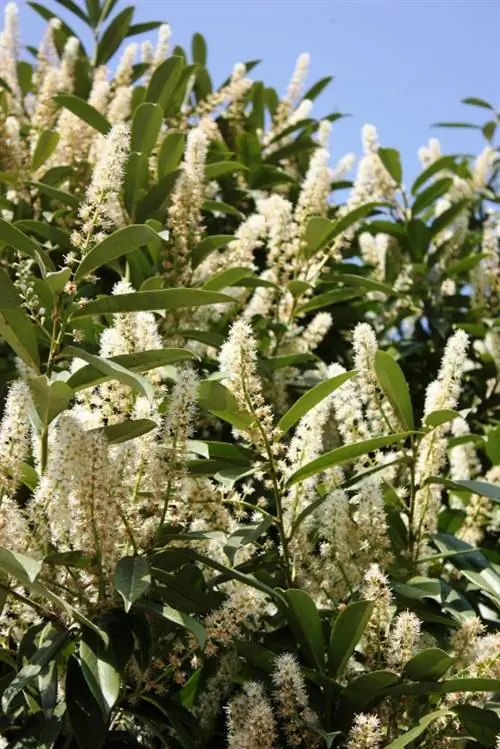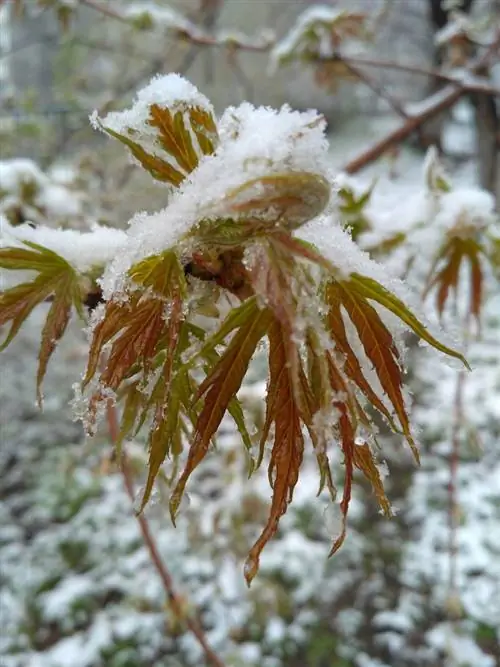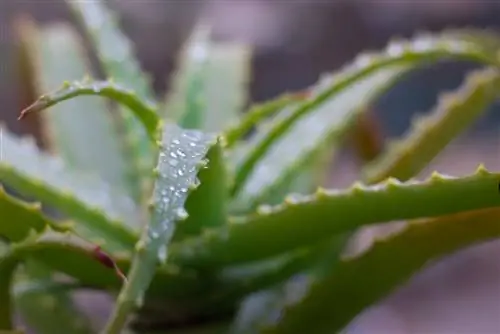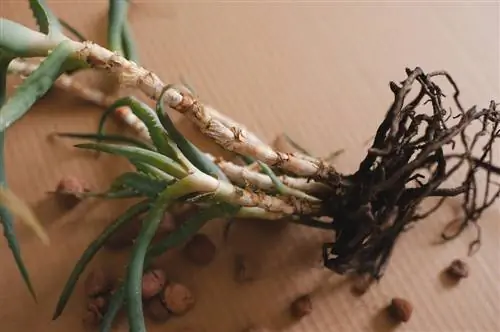- Author admin [email protected].
- Public 2023-12-16 16:46.
- Last modified 2025-01-23 11:21.
The common boxwood (Buxus sempervirens) originally comes from the Mediterranean region, but has also been native to Central Europe for centuries and is well hardy. Frost damage can only occur in very frosty winters if the plant cannot absorb enough moisture due to the frozen ground.
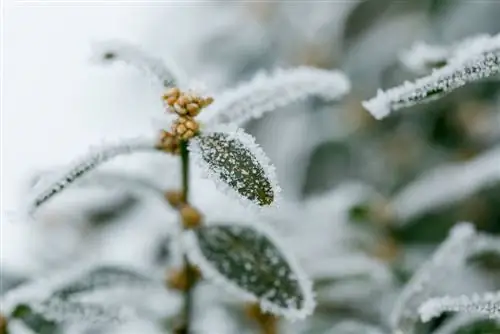
How do you recognize and treat frost damage on boxwood?
Frost damage to boxwood is shown by yellow or brown leaves in spring. To treat the plant, cut back dried shoots to encourage new growth and fertilize the boxwood with an organic mixture of compost, horn shavings and rock dust. Potted boxwood should be protected from frost in winter.
Frost causes drought damage to boxwood
If the boxwood suddenly develops yellow or brown leaves in spring, there may be frost damage behind it. In this case, the plant was unable to absorb enough water during a long period of frost - during which the ground may have been frozen - and as a result it dries up. In contrast to some other plants, boxwood also needs water during the winter months. Typically, however, the leaf damage only becomes apparent long after the actual dry period, and the roots may also be affected.
Properly treat boxwood with drought damage
Once the leaves are discolored, they will not turn green again. This also applies if the plant recovers thanks to appropriate care. For this reason, pruning makes sense by removing the dried shoots. This measure stimulates the boxwood to produce new shoots, and the more frequently you cut, the branching becomes denser and more compact. Even a deep cut into the old wood does no harm and can even save a box that is bare from the inside. Another sensible measure is to supply the attacked boxwood with a good long-term fertilizer (€4.00 on Amazon). An organic mixture of compost, horn shavings and rock dust is best suited for this.
Overwinter boxwood properly in a pot
Boxwood cultivated in pots is significantly more sensitive to frost than planted specimens. Therefore, you should take appropriate measures to protect it from cold temperatures:
- Wrap the pot and, if necessary, the plant loosely with garden fleece.
- Place the pot on an insulating surface, such as wood or Styrofoam.
- Place the pot directly against a house wall.
- Place the box in a bright place, but not in full sun.
- Don't forget to water the plant on frost-free days.
Tip
Box should not be cut back after mid-August / early September, as this stimulates the development of new shoots. However, these would no longer ripen in time before winter, so there is a risk of frostbite.


